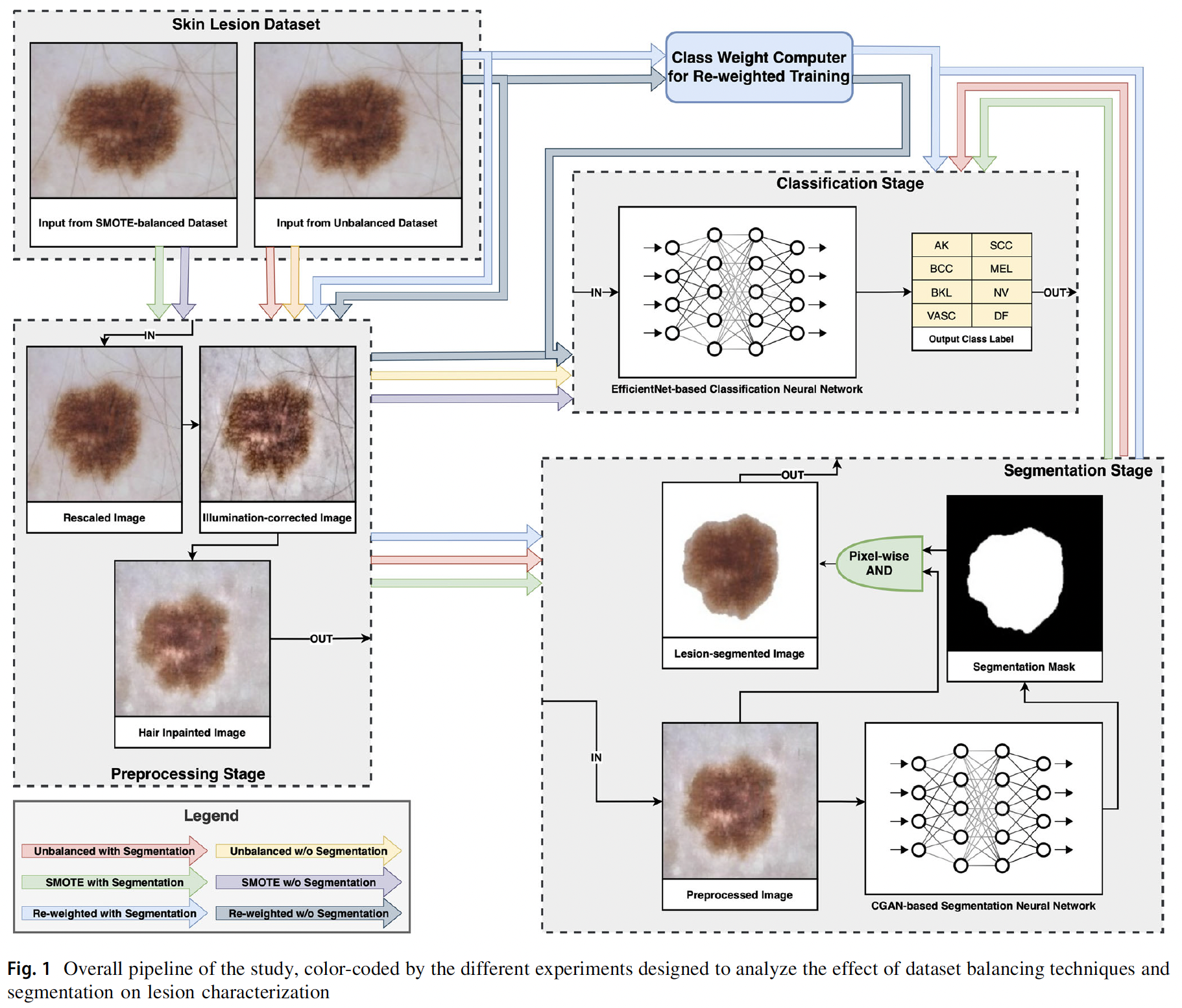Analysis of Dermoscopic Skin Lesion Images to segment lesion regions and characterize the lesion type using deep adversarial learning (conditional GANs) and EfficientNet-based classifiers.
- Online research article [Springer Nature, HTML].
- Published manuscript [PDF].
- Data directory organization [Markdown] (internal reference).
If you find our work useful in your research, please cite us:
@article{kd2024conditional,
title={Conditional adversarial segmentation and deep learning approach for skin lesion sub-typing from dermoscopic images},
author={Mirunalini, P and Desingu, Karthik and Aswatha, S and Deepika, R and Deepika, V and Jaisakthi, SM},
journal={Neural Computing and Applications},
pages={1--19},
year={2024},
publisher={Springer}
}
The different choices of data balancing and segmentation approaches used to augment the skin lesion characterization pipeline are presented in the following schematic.
The dataset balancing analysis and lesion segmentation network is contained in notebooks. The python notebooks are sequentially numbered; simply run them serially to reproduce the presented experiments.
The classification architectures for classifiers are scripted in src/classifiers. The preprocessing workflow used to prepare the dataset is contained in model-building.
- Load the appropriate classifier driver function, say
experiment_effnetb6(refer to the.pyfiles andimportstatements), insrc/run.pyby importing them. - Set up the data path.
- Call the driver function in
src/run.py, and execute the script withpython run.py.
Set up the execution environment using the requirement files.
- Requirements for setting up conda environment are contained in
dep-file-conda.yml. - Requirements for setting up using pip installations (not recommended) are contained in
dep-file-pip.txt.
Note
The proprietary segmentation dataset generated with the help of expert pathologists used will be released upon reasonable request after the research manuscript is published.
